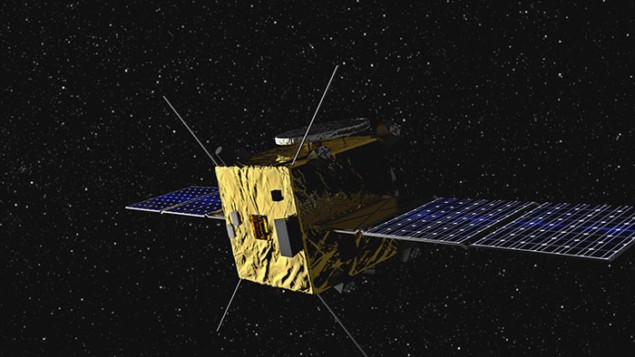Flash Physics is our daily pick of the latest need-to-know developments from the global physics community selected by Physics World‘s team of editors and reporters

“Small-body scientists” call for more asteroid missions
More than 100 planetary scientists have signed a letter calling for more space missions to study asteroids and other near-Earth objects. The “small-body scientists” emphasize the need for the Asteroid Impact Mission (AIM), which is currently a proposal being evaluated by the European Space Agency (ESA). AIM has been proposed for inclusion in the Asteroid Impact and Deflection Assessment (AIDA) mission, which could be launched in 2020 by ESA and NASA. AIM would travel to a binary asteroid system called Didymos, where it would study the smaller asteroid in the system. This smaller asteroid is about 150 m across and is of interest to scientists because it is about the same size as most asteroids that could potentially strike Earth. AIM would also stick around to watch as the Double Asteroid Redirection Test (DART) – also part of AIDA – smashes into the smaller asteroid to see if it is possible to deflect an asteroid on a collision course with Earth. The signatories point out that we currently know of more than 1700 asteroids that are considered hazards because they could collide with Earth. “Unlike other natural disasters, this is one we know how to predict and potentially prevent with early discovery,” they write.
Mahouton Hounkonnou bags 2016 C N R Rao Prize
Mahouton Norbert Hounkonnou, a professor of mathematics and physics at the University of Abomey-Calavi in the Republic of Benin has won the 2016 C N R Rao Prize for Scientific Research. The prize, which is awarded by The World Academy of Sciences (TWAS) in Italy, recognizes Hounkonnou’s “outstanding level” of research in mathematics and his sustained commitment to mathematics education. He was given the prize “for his incisive work on noncommutative and nonlinear mathematics and his contribution to world-class mathematics education”. Hounkonnou’s research has seen applications in a variety of fields including physics, oceanography, health, the management of water and ecosystems, climate studies and energy policy. The prize was announced yesterday during the opening ceremony of the 27th General Meeting of TWAS. The prize – which is named after and provided by TWAS founding fellow and chemist C N R Rao – aims to recognize high-impact scientific work done by researchers from Least Developed Countries. “For me it is an important recognition of more than 20 years of research activity,” says Hounkonnou. “At the same time, it is a sort of encouragement and motivation to continue in the same direction, doing good research and promoting younger people in science,” he adds.
Laser pulses control electron emission with femtosecond timing

A method for switching a source of electrons on and off on the femtosecond (10–15 s) timescale has been developed by Michael Förster of Friedrich-Alexander University in Germany and colleagues. It involves firing two laser pulses at a nanometre-sharp metal tip to excite electrons out of the metal. One pulse is relatively bright and at frequency ω, whereas the other is relatively dim and at frequency 2ω. There are two different ways that electrons in the tip can absorb energy from the pulses and be emitted into the vacuum. Quantum interference between these two pathways can either switch the emission on or off, depending upon the phase difference between the ω and 2ω light. Förster and colleagues report that electron emission can be switched off in 10 fs or shorter by adjusting the phase difference. Electron sources based on the effect could find use in ultrafast electron microscopes, tabletop particle accelerators and intense sources of X-rays. The technique is described in Physical Review Letters and could also be used to measure the phase difference between laser pulses.
- You can find all our daily Flash Physics posts in the website’s news section, as well as on Twitter and Facebook using #FlashPhysics. Tune in to physicsworld.com later today to read today’s extensive news story on the “world’s smallest magnifying glass” .



